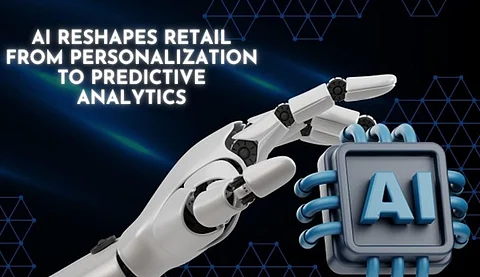

A groundbreaking research paper by Deepti Bitra, a retail technology expert from the USA, offers an in-depth analysis of how artificial intelligence is revolutionizing the retail sector. Her technical analysis reveals the transformative impact of AI across multiple facets of retail operations and highlights the rapid evolution of smart retail technologies. The study explores several key innovations, from sophisticated sentiment analysis frameworks to AI-powered customer service architectures, reshaping modern retail landscapes.
The advanced personalization engines have become a key progressive technology in retail that analyses about 1800terabytes of user data per day with an impressive 89% accuracy in giving recommendation. These systems use advanced neural networks for analyzing customer behaviour patterns and resulted in up to 33% increase in CLV and up to 22% increase in customer retention rates. Thus, the use of technology has led to better targeting and advanced analytical techniques due to more than 250 customers’ attributes. These highly advanced personalization techniques have further helped the retailers to offer persona-specific shopping experience that has greatly improved overall customer interest and conversion.
Modern retail systems now handle over 850,000 consumer interactions per second with remarkably low latency, transforming how stores engage with customers. The implementation of real-time content adaptation has yielded significant results, including a 32% boost in conversion rates and a 37% improvement in consumer engagement metrics. These systems can classify user interests instantly with 91% accuracy while processing an average of 2.8 terabytes of behavioral data daily. The integration of edge computing and advanced data processing algorithms has revolutionized the speed and precision of retail operations across digital platforms. Furthermore, these innovations enable retailers to deliver personalized experiences at scale, with sophisticated AI models adapting content in milliseconds based on real-time customer behavior.
AI technology has also been equally impressive in inventory demand forecast and stock replenishment. These systems can predict short term demand within a range of about 88% and seasonal demand within a range of about 82%. The technology manages more than 1.2 terabytes of transaction data and uses over 150 markers to make accurate demand estimates. These developments have brought about a 28 percent increase in the stock turnover rates and 25 percent decrease in costs of holding inventories. Specifically, the use of similar algorithms for inventories has revolutionized the inventory management, sparing retail businesses from copious waste. Besides, these systems intervene in live, by scrutinizing market trends, weather conditions, and other conditions that affect economic productivity hence allowing businesses to adjust their inventories in response to variable market conditions.
AI implementation in Customer Service has provided noteworthy benefits, most NLP engines translate to a 91% understanding language capability across 25 languages and tackle over afresh million client questions per daylight. The subsequent modernizations have revealed a 38% rise in the customer satisfaction scores and 48% lower frequencies of the inquiries. Moreover, intent classification systems currently boast 87% efficiency regarding the correct channeling of clients’ inquiries towards the services that can solve their issues. Thus, the additions of accurate AI algorithms along with natural language understanding have very efficiently transformed the customer support framework.
Advanced sentiment analysis frameworks now process over 2.2 million consumer contacts daily across multiple channels with 90% accuracy. The technology can identify up to 24 different emotional states with 82% accuracy, leading to a 35% rise in favorable brand associations and a 40% improvement in customer engagement rates. These systems provide comprehensive emotional intelligence by simultaneously processing text sentiment, speech tonality, and facial expressions. The integration of deep learning models has enhanced retailers' ability to understand and respond to customer emotions in real-time.
The implementation of AI solutions in retail has necessitated robust technical infrastructure, with leading retailers processing an average of 2.8 petabytes of data monthly. Cloud-based storage solutions have reduced storage expenses by 28% while maintaining 99.95% data availability. The systems process more than 1 million transactions per second during peak times, maintaining a latency of less than 75 milliseconds for 92% of transactions. Advanced microservices architecture and containerization have enabled unprecedented scalability and reliability in retail technology deployments.
In her concluding analysis, Deepti Bitra emphasizes that successful AI implementation in retail requires a careful balance between innovation and stability, with a focus on scalability, reliability, and seamless integration with existing systems. The future of retail technology promises even more advanced capabilities in anticipating and meeting customer needs while maintaining operational efficiency, transforming the shopping experience for generations to come. This evolution in retail technology demonstrates the sector's commitment to embracing AI-driven solutions, marking a pivotal shift in how businesses connect with and serve their customers.
